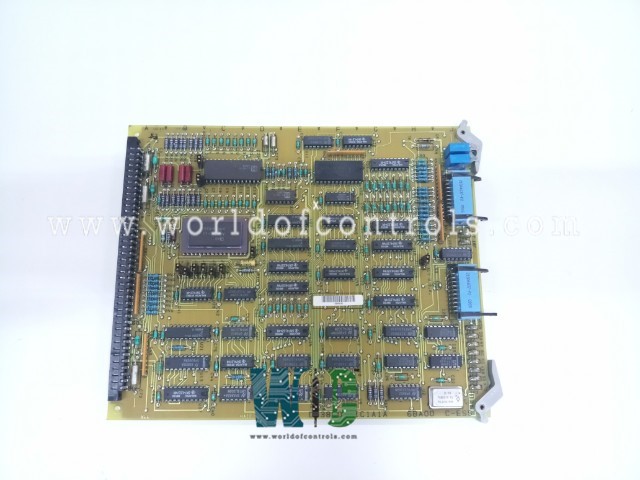
World Of Controls understands the criticality of your requirement and works towards reducing the lead time as much as possible.
DS3800HAIC1E - Analog Input Board is available in stock which ships the same day.
DS3800HAIC1E - Analog Input Board comes in UNUSED as well as REBUILT condition.
To avail our best deals for DS3800HAIC1E - Analog Input Board, contact us and we will get back to you within 24 hours.
Part Number: DS3800HAIC1E
Manufacturer: General Electric
Series: Mark IV
Product Type: Analog Input Board
Availability: In Stock
Country of Manufacture: United States(USA)
DS3800HAIC1E is an Analog Input Board manufactured and designed by General Electric. It is a Part of Mark IV series. It is designed to receive and convert analog signals (such as temperature, pressure, or voltage) into digital signals that can be processed by a microcontroller, PLC (Programmable Logic Controller), or other processing units. Signal Conversion: It typically includes an Analog-to-Digital Converter (ADC) to convert continuous analog signals into discrete digital values. An analog input board have multiple channels to support several analog inputs simultaneously (e.g., monitoring temperature across multiple sensors).
WOC has the largest stock of GE Replacement Parts. WOC is happy to assist you with any of your automation requirements. For pricing and availability on any parts and repairs, kindly get in touch with our team by phone or email.
What is DS3800HAIC1E?
It is an Analog Input Board manufactured and designed by General Electric.
What types of signals can the board handle?
It is compatible with input signal types, including voltage and current signals. This makes it versatile for use with different kinds of sensors, such as those measuring temperature, pressure, flow, and level.
How many input channels does it have?
The board features multiple input channels, allowing it to interface with a variety of field devices at the same time.
How do I install the board?
It is typically mounted in the Mark IV control panel of turbine systems. It connects to the control system via modular connectors. The installation process involves properly connecting the input signal wires to the board’s input channels and ensuring that the board is securely mounted in its designated slot.